What could go wrong with backing a Kickstarter campaign for an app-controlled LED light bulb that had a built-in AirPlay speaker? A light bulb! With a speaker! Fantastic!
Although the speaker bulb shipped late—always a risk with crowdfunded hardware—it worked as promised. Or at least it did, until the company went under. Then the app stopped working and never functioned again, despite the company’s promises. At least the bulb retained its last brightness settings.
If only I had followed my own rules about purchasing hardware! To be sure, I was curious to try out something new, and I considered the money spent an experiment instead of a bad purchase. But I’ve been more wary ever since, and I try to listen carefully to either my inner skeptic or my spouse, an “early rejector” whose feelings about technology are rarely off base.
You can largely avoid getting stuck with hardware that “bricks” when it should otherwise still be functional by following my advice. The summary? First, buy from companies that are likely to be around in the future. Second, focus on products that can operate independently of an app or cloud-based service.
The best advice is to buy mature, well-documented products, and if that sounds like “No one ever got fired for buying IBM,” well, there’s some truth to that saying, even if you’re the one who would be firing yourself.
Evaluate the Company’s Current and Future Support
While you always want to have confidence in a company from which you buy a device, it’s all too common for companies to disappear into the ether shortly after your purchase. Here are some signals to watch for.
Startup Companies
The term “startup” used to have a more precise meaning, but it’s fair to define it today as a company that hasn’t yet found a path to ongoing profitability. Startups get a lot of attention, push the envelope, and sometimes take in massive amounts of revenue from early products, or even pre-sales of such products.
But if you’re buying hardware that you expect will require firmware updates, maintenance for an app, cloud communication, or potential repairs, there’s no way for a startup to make that promise to you. It might go bankrupt, be acquired by a larger firm that has no interest in supporting existing products, or simply lack the resources to maintain older products.
I have some solid examples:
- The Skydog Smart Family Wi-Fi Router provided parents with fine-grained control over each family member’s Internet access. Yahoo covered the acquisition of its maker PowerCloud Systems by Comcast in “Skydog Is Dead, and Comcast Killed It” (2014).
- Eye-Fi combined an SD storage card with Wi-Fi so the card could automatically upload photos immediately after they were taken. I looked at how Eye-Fi intentionally rendered older cards non-functional here in TidBITS in “Eye-Fi Demonstrates the Danger of Cloud-Dependent Hardware” (30 June 2016).
- Revolv was a home-automation hub that could control a wide variety of devices. Nest, owned by Google, bought Revolv in 2014 to acquire the company’s engineering talent and shut down Revolv entirely in 2016. The Guardian wrote about the situation and user backlash in “Revolv devices bricked as Google’s Nest shuts down smart home company” (2016).
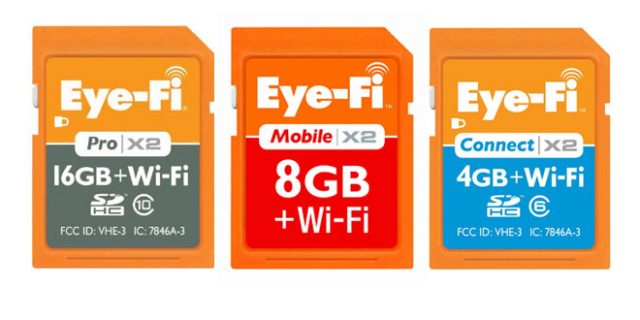
The concern about buying products from startups remains paramount with early mesh-networking companies, which make products that intelligently and dynamically connect to one another to form large Wi-Fi networks. While these networks use Wi-Fi for client connections, they all rely on proprietary protocols for mesh interconnection, which is the real secret sauce of the systems. Mesh startups face competition from established networking companies like NetGear and Linksys that have leaped in with both feet. That may have led Eero, under severe financial pressure, to sell itself to Amazon earlier this year. So far, the product remains unchanged.
Of course, if you’re seeking the thrill of trying something new, or you’re sure that a startup’s product will immediately provide you with a significant benefit no other hardware can offer, you don’t have to be in it for the long haul.
Crowdfunding Campaigns
Let me be the first to admit that I’ve purchased perhaps too many items through crowdfunding campaigns run at sites like Kickstarter and Indiegogo. However, I have rarely been disappointed, and only a few times have my disappointments cost me more than a nice lunch. (Even the light bulb I mentioned at the beginning continues to provide light.)
But I recommend that most people avoid crowdfunded projects unless you also have a strong desire to support the maker and can cope if the product never ships.
The Coolest Cooler remains a deeply cautionary tale. After a massively popular Kickstarter campaign in 2014, the company sold over 60,000 units of the Bluetooth speaker/blender/cooler combo, bringing in over $13 million. Despite that initial success, the company ran into manufacturing problems and still owes backers about 20,000 units.
Even for campaigns that fulfill brilliantly, you may not want the first unit that rolls off the assembly line because it may not be built as well as later units. That’s especially true for makers producing a new or radically different product while racing to meet deadlines.
Divergent Products from Established Companies
Companies trying to find new lines of revenue often diversify, but you may not want to be the guinea pig as a firm tries to find a new direction, commonly referred to in the press as a “pivot.” I tend to avoid products that are entirely different from anything that an outfit previously made until they’ve been in the market for a while and I’ve been able to both read product-testing reviews and user reviews on Amazon and elsewhere.
Arguably, Microsoft is an example of both extreme success and total failure in this category. Its Xbox gaming system was a major shift in direction for a company that had been known primarily for Windows and Office, but it quickly became a serious competitor to long-established game consoles from Nintendo and Sony and is now nearly two decades old.
However, the Windows Phone is an example of the opposite. Faced with Apple’s iPhone (2007) and then Google’s Android (2009), Microsoft brought out Windows Phone in 2010, a seemingly strong contender that never gained traction. Microsoft’s desperation purchase of Nokia’s handset business in 2014 took down both that company’s pioneering-but-lagging line of phones and Windows Phone by 2017.
At a far lower scale, Google has a graveyard of in-house hardware, much of which lasted less than a year. That list includes Google’s Nexus Q, a weird multimedia home-entertainment adapter introduced in June 2012, discontinued by January 2013, and dropped from ongoing support in May 2013.
Companies Facing Adversity
Do you want to be the last person to buy a device from a company that then goes under? Especially for more expensive items, it’s always worth reading up to make sure that a company isn’t in the middle of its CEO being ousted, a credit crunch, or a devastating lawsuit. A quick Google News search for the company or product name should turn up any noteworthy problems.
Products without Spec Sheets
Skip ’em. Especially for reasons of compatibility and performance, you want to be able to get a rundown on enough details to predict how well a unit will work today and how well it might work with your ecosystem of existing hardware and media in the future.
I’ve found a surprising number of products from otherwise seemingly legitimate and long-running companies where I can’t get down to brass tacks and find out things like the capacity of a battery, the number of Wi-Fi radios, or its compatibility with other products. If the company can’t manage to put out a detailed spec sheet, the product may not be well-supported, has been overhyped by marketing, or may be entirely fictional.
Products from Faraway Countries
Companies and products from China dominate this category, but I don’t want to paint that nation with a broad brush, because so many excellent items from large and small companies alike are designed or (more commonly) produced in China. Instead, I’d caution you to pay close attention to products from any company that doesn’t have a business presence in your country.
China, in particular, is known for having seemingly thousands of companies that sell inexpensive commodities like cables, adapters, and other consumer electronics through Amazon Marketplace. Some—perhaps many of these—are low quality, while a substantial fraction are perfectly well made. The trick comes in figuring out how to differentiate the good from the bad.
When USB-C cables and adapters began to proliferate in 2015, Google hardware engineer Benson Leung began testing items that claimed to be USB-C certified or compatible. His work helped consumers navigate an ocean of potentially dangerous crud, partly because some USB-C cables can carry high-wattage power and partly because the standard can be difficult to implement fully.
A quirk in postal rates meant to subsidize developing nations is one reason why we see so many Chinese-made items sold so cheaply in the United States. Items made by Chinese companies can be shipped to the US more cheaply than companies within the US can ship to other domestic addresses! (That pricing quirk appears poised to end.)
Buying from a company outside your own country can make it difficult to get technical support, service, or exchange a faulty product, and the company’s location may make it impossible to pursue typical methods of getting relief in the event of fraud.
In this global economy, there are plenty of good reasons to buy hardware from companies headquartered elsewhere in the world, but be sure to factor in follow-up difficulties as part of your purchase process.
Tied to an App or the Cloud? Keep Your Feet on the Ground
Modern hardware tries to make use and configuration easier by relying on smartphone apps. Some devices may also lean on the cloud not just for storage or syncing settings or other data, but as the brains that drive a service. Both can be problematic when things don’t work out as expected.
On the app front, companies typically have to support both iOS and Android apps.
With yearly updates, sometimes significant interim bumps, and security fixes and policy changes to these operating systems, a hardware company has to make a substantial investment in keeping its apps up to date. Even if the hardware remains completely functional, its associated app could become unusable if the firm isn’t ready for an operating system update. This, in turn, renders the hardware temporarily useless for users who install updates right away.
Other times, a company might discontinue a product or replace it with a new model and stop updating the necessary app. That’s what happened with the AirPlay-enabled Twist light bulb that I mentioned earlier. The company turned out its lights a couple of years ago. In January 2018, the company told 9to5mac that the app and related cloud services required for the bulbs and app to talk to each other were “paid for and covered for a long while.” Then the app stopped working a few months later.
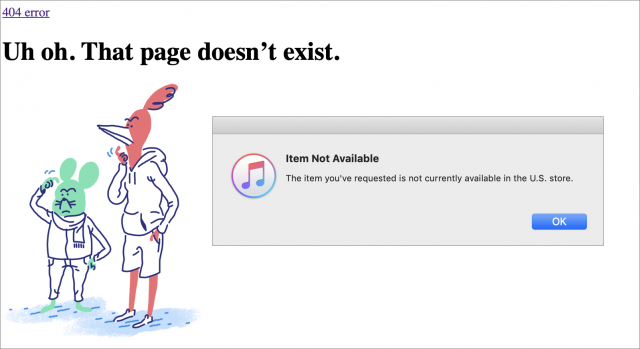
In particular, many home-automation and smart-lighting devices rely on a combination of cloud access and an app. Even if an app continues to work without updates, cloud services can fail or not be paid for, making the app useless. This is a case for focusing on devices that support HomeKit, since then Apple’s Home app may provide the necessary controls even if the product’s native app goes under.
(I have a happy-ending counterexample, though: the Withings Wi-Fi scale I purchased a while back. In 2016, Nokia acquired Withings, discontinuing the original app and incorporating scale support into another of its own apps. In 2018, Nokia sold the division back to the founder of Withings, and what appears to be a third version of the app still talks to the scale. My scale died recently, but the app abides!)
Some expensive hardware leans heavily on the cloud due to a Silicon Valley principle often stated as “software eats hardware.” Some features that used to require dedicated chips and specialized hardware can now be simulated in software as long as enough computational power is available. But that much processing power can be expensive to build into individual devices, and in many cases, the number-crunching is needed only occasionally. Companies therefore opt to make less intelligent hardware that’s less expensive, shifting the computation and control into the cloud. This approach can also make it feasible to add new features that wouldn’t be possible with baked-in hardware.
A great example is the Glowforge, a 2D laser cutter that was funded largely by the most successful crowdfunding campaign for hardware, along with traditional venture capital. Glowforge users rely on a Web app to upload designs for cutting and engraving. When a user clicks to “print” the design, the Web app passes the details to a back-end system that uses cloud-based servers to compute the extensive, optimized set of instructions the cutter needs. The Wi-Fi-connected cutter then receives the plan and lights up a big friendly button. (Disclosure: A friend founded the company, and I received a unit free after referring enough buyers in an affiliate program.)
By itself, a Glowforge cutter is just a lump of expensive plastic, metal, and silicon, plus a bit of firmware that drives the laser and talks to the Internet. To avoid buyers’ concerns about it bricking, the company released a good chunk of the firmware that drives the printer and has signaled its intent to continue. The printer has “open firmware,” meaning it can be changed without requiring cryptographic keys possessed by Glowforge or other special arrangements. It’s not a trivial matter to go from those files to a fully functional Glowforge, but there are enough owners that should Glowforge fail, an independent development community would surely rise as it has with maker-oriented hardware that has been discontinued in the past.
Making cloud software and device firmware available isn’t the same as providing an open system with failover plans in case of company failure. But it’s better than a closed environment that ensures devices stop working when a firm or product comes to its end of life.
Pick Mature and Well-Documented Products
It may not be as much fun to buy long-standing devices with well-tested features from established companies as it is to ante up for the latest shiny bouncy tech ball, but that’s usually the safest course of action.
If you follow the principles I’ve laid out above, you’re much less likely to buy into products with problems. And if you just can’t resist the latest Kickstarter campaign or hot startup’s product, go into it with the right expectations: you’re providing support and buying entertainment, not necessarily getting a device that will take a licking and keep on ticking.
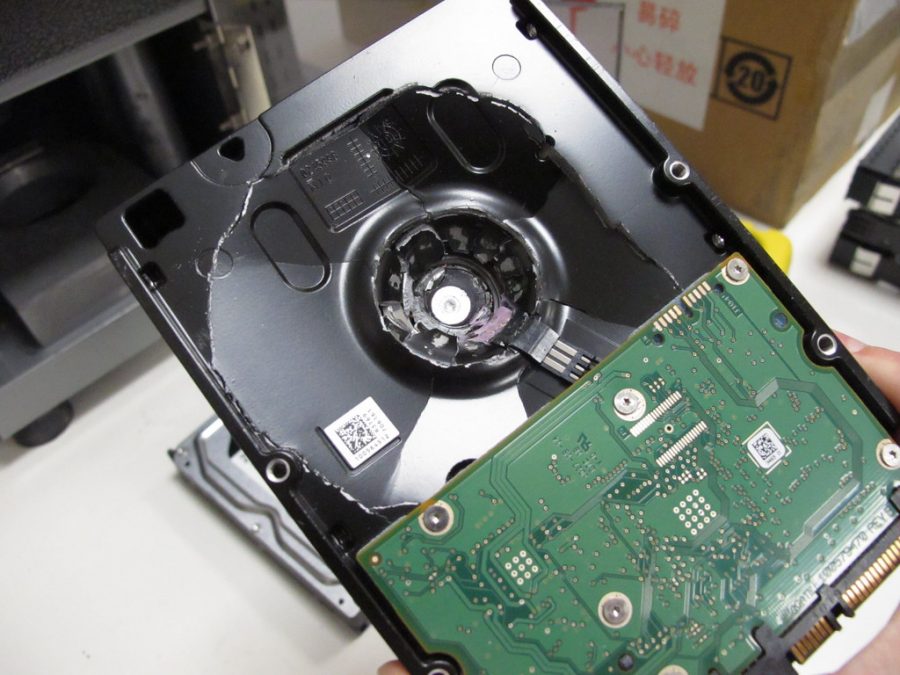
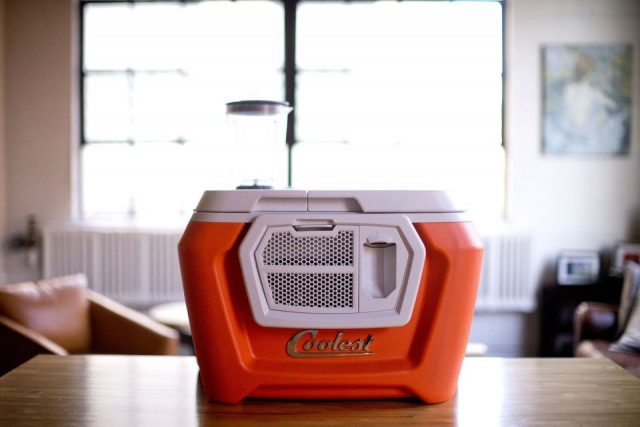
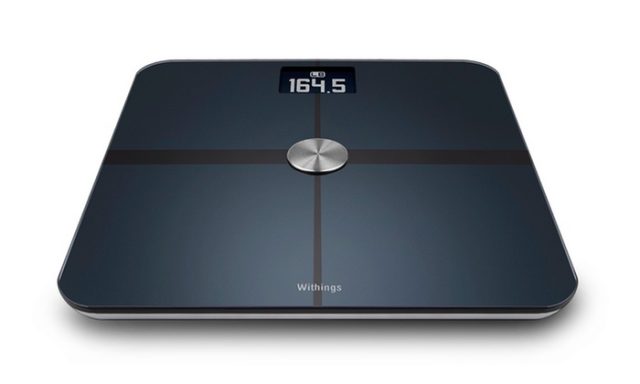
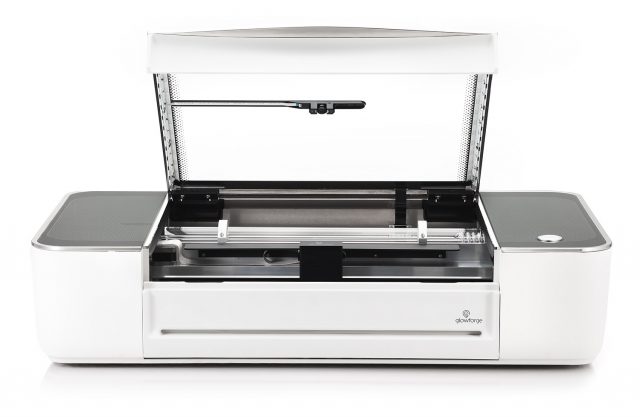
One word: Wink.
I got my first Wink home automation hub as a review unit from Amazon, along with a nice Lutron dimmer switch. I soon purchased a second (which they were practically giving away at the time) and replaced much of our home lighting to work with it.
Four years later, Wink is no longer owned by Quirky Labs by GE. The hubs struggle with cloud issues—because to some extent every command to control a device has to go out to the cloud and come back again before the hub can act on it.
I liked (and still do to some extent) Wink because it’s like the PageMaker of home automation: it integrates lots of different protocols into one interface. But I fear it’s like PageMaker for another reason: its current owners can’t make any money on maintaining the cloud infrastructure because they inherited a promise that the company would never charge for it, and instead would make its money on hardware sales.
So when Wink offered a 15 percent discount on upgraded hubs recently, I passed. I don’t have any confidence they will be there by this time next year.
Weirdly, right now their own software barely works with the hubs, but somehow Alexa can make it all go in the, er, Wink of an eye.
EyeTV HD. I knew it had a limited lifespan because there would be hardware/software/broadcasting compatibility issues over time. But it solved a problem nothing else solved and still works as long as I keep an older computer with an older OS around.
The Screenflow app can do much of it now, if the hardware is new and fast enough.
I would have liked some of my Apple hardware to have lasted longer, notably the iMac G5 with the bad capacitors. Still, at least those iMacs were designed to be opened up by users, whereas current Apple hardware seems much harder to repair. This is a timely article, but let’s not forget the need to make the hardware itself repairable as far as possible.
I had one of those! I didn’t include it as an example, because I bought one many years ago, kept using it through software updates (some of them paid), and finally abandoned when the software/hardware combination went wonky. But I had several good years of use out of it. Now I use a SiliconDust Ethernet-based networked tuner (with two separate tuners) and the Plex Pass software/subscription for TV programming information and recording to my Mac.
Very nice article, @glennf.
I am curious about this one bit:
What is simplified in terms of configuring by forcing people to use an iOS or Android app instead of a proper Mac/Win/Linux app? I am thinking specifically about longevity here. On this board we have discussed many times how people run an older OS X in a VM to retain use of an old non-updated app. I’m not aware of any such solution for iOS. Furthermore, the support cycle for iOS is basically one year. So I would imagine having a Mac app to configure hardware automatically increases the chances of that hardware as remaining useful over several years.
Fantastic question. I probably could write 1,000 words in answer! I’m going to try to keep it short and sweet.
In the olden days, most companies making embedded hardware without a display or with a very limited LED panel would have the device host a tiny Web server for browser-based administration. Even with browser compatibility issues that generally worked. A many years old Yamaha receiver I have has such a thing. The design is hilariously stripped down, but it works! I can even update firmware through it.
Sometimes those companies would make a Windows program that could range from just as stripped down to far better. They rarely made a version for the Mac. With iPhones and Android in ascendence, my perception is that few companies are writing native Windows apps, and unless the product is heavily Mac-oriented, they aren’t writing a native Mac app either.
Because they’re required to do smartphone development, that really limits the budget for all but the biggest companies. They can’t not make an iOS app and they typically must make an Android one. Throw macOS, Windows, and sometimes Linux in the mix, and few products can support five simultaneous app-development efforts.
Look at Slack! I’ve written a couple editions of a book about this company valued at many billions of dollars. They have zero hardware to support—it’s 100% interaction with their central server. And they cannot keep Mac, Windows, iOS, Web app, and Android apps fully in sync with a common interface. Differences abound even years into simultaneous development!
Companies focus all their development money into the biggest markets, and only work on subsidiary ones if there’s enough profit or necessity there later. That generally equates to a Web app if anything. Take a look at mesh products, some of which have been in development for years. To my knowledge, there are only smartphone and Web apps that drive them—and not all even have a Web app.
I’m not sure I understand the argument. When you refer to smartphone config are you thinking browser-based config? Or actual iOS/Android apps? If it’s the latter, I’d be afraid we’re in for trouble. While iOS market share is doing fine in the US, in many (most?) foreign markets Android is about where Win was in the 90s.
Smartphone config or smartphone development means native apps. That’s distinct from Web apps that work on smartphones, either tailored for them or using responsive design.
Native apps retain a number of advantages over Web apps, because of how they can tie into network, notification, HomeKit (and similar non-Apple ecosystems), etc. They can also be used offline on local networks and rely on Bluetooth in a way that Web apps cannot as easily, if at all. Web apps can’t retain state the same way between session as native apps, etc. Customers expect native smartphone apps, look for them in the App Store, and it’s a measure of a company’s fitness to market to have them.
Longevity of hardware is always a concern, but in my article (and here) I would argue that companies don’t place the same interest or emphasis on being sure that either an existing app will work forever without updates or that they can continue to indefinitely updates app for new smartphone (and desktop) operating system releases.
Market share has never defined iPhone success, though. Developers of software and hardware both know where the money is spent. Even with Android having a much larger number of units in the market, check this stat. If you’re looking at market share, you might think Android app revenue should be ten times that of iOS app revenue. And yet estimates are (as in this source) that Apple App Store revenues is 2x that of Android’s Play store.
Ask hardware makers and developers, and they may not trumpet the fact, but they know. In fact, some hardware is introduced first with only an iOS app. Some online services introduced a Web app + an iOS app first and promise Android later (some even deliver).
Another Kickstarter supported rip-off company was Znaps!, the magnetic connector/adapter for smartphones. They ripped me off. I learned my lesson and will not support any Kickstarter (or similar) project again.
Glen is 100% on the money here. Thinking forward to revenue growth for Apple’s growing lineup of services, Android users are joining Apple Music in record numbers:
Apple Music Hits 40 Million Installs on Android, On Track for Best Quarter Yet
https://sensortower.com/blog/apple-music-android-downloads
Although this number doesn’t guarantee that every install will yield a long term paid subscription, the chances are excellent that Apple is accruing a substantial revenue base from Android owners. And don’t forget that Google is paying Apple $12 billion this year to remain Safari’s default search engine:
https://fortune.com/2018/09/29/google-apple-safari-search-engine/
When it comes to apps and services, Apple definitely punches waaaay above its weight in the marketplace, and they are earning a lot of money from Google/Alphabet.
I came across some (paper) brochures for the first Macs that I ever bought in 2004
I just paid about the same for a new 27" iMac! Incidentally, I bought this a little earlier than planned so that I am not forced to use a new Mac running Catalina with its 32-bit woes.
Anyway the “table lamp” iMac still boots up and seems fine. So that is “lasting” hardware!
Good article with good advice.
And I’d be especially skeptical of crowdfunding. I am sort of sympathetic with the lone misunderstood inventor ideal, but now we see companies that use Kickstarter etc as unregulated, unsecured, loan sources for in-house development. Seems shady to me, as obviously they won’t invest their own money and can’t secure it from traditional sources, who demand more accountability than gullible internet donors. Not to mention overreach; some companies with decent products tried to go too far and it broke them.
Also, avoid anything on Kickstarter etc that is just a mash up of existing products. We see that a lot. The “inventor” thinks because we like music and beer together we should have cooler that’s a speaker, as noted by Mr. Fleishman. You see that a lot with outdoor products, like the defunct Earl.
I don’t know that that’s generally true. Most of the big failures and lack of delivery I’m aware of where any substantive money was involved relate to the inexperience of the creators or a show stopping problem well into development or production. The Coolest Cooler that I mention above: there’s no question that the folks making it thought they had raised enough money and thought they had sorted out all the difficulties. But they vastly underestimated several elements—they didn’t even realize they would need to touch every unit (having it shipped to them) before sending to customers (shipping out). That dramatically increased shipping costs because the thing is a bear!
Some companies are more straightforward about this, although I tend to see them on Indiegogo. I actually pre-ordered a book scanning system there, which was delivered a little late but just arrived and works as expected. The company selling it uses Indiegogo as its pre-order and order-processing front end, and is pretty straightforward about it. I wouldn’t have bought an earlier product from them, as they had no track record. But this one was the second scanner they made, they’d fulfilled all of the first ones, and were selling the first scanner concurrent with raising pre-order funds for the second.
An example of what I’m talking about: https://petapixel.com/2017/01/31/r-p-triggertrap-trigger-pioneer-close-shop-kickstarter-fail/
I back many projects on Kickstarter, and a vast majority are good investments into products. The one sore spot I had was a device to store extra files for the iOS system. The hardware was decent, but then the company did not update the software for iOS system updates and the device was useless. I try to look for things now that are not so dependent on other systems. When those systems change or fail, the chain is broken.
Yes, that’s exactly it. Not malfeasance, but misfeasance: they didn’t really understand the costs of what they planned when they raised money to make the thing! I’ve seen this a lot, for sure, but fortunately it’s rarely happened to me, as I have mostly avoided things that are extremely complicated. I tend to back books and music!
I’ve backed something like 26 Kickstarter projects to date. I’ve bought a large variety of things, for example a travel bag and a travel backpack, both of which I like and use, and the Unravel Qi charger. I backed the revival of Mystery Science Theater 3000, which got picked up by Netflix. Lots of cycling related things; the power meters I use daily I got on Kickstarter, the trainer I use in the winter I got from Kickstarter (don’t remember whether the smart upgrade was on Kickstarter or not). The one failure was a cycling mirror which never delivered, so I’m out about $25 in all. Of the backed projects pending, all of them are produced by people who have successfully delivered previous products, so I’m not worried about them. If there’s a trick it’s to back projects by established players who have already brought products to market.